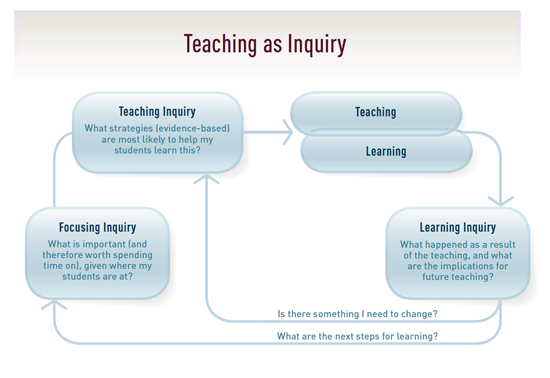An inquiry process for teaching
The ‘teaching as inquiry’ cycle described in The New Zealand Curriculum recognises that teaching is too complex an activity to be reduced to a formula or a fail-safe methodology.
Knowing our students is as important as knowing our subject. Based on this knowledge, we establish priorities, try an approach, assess how effective it is, and make whatever changes are required. As teachers, we are also always learners.

NZC_Teaching as inquiry diagram
If you cannot view or read this diagram, select this link to open a text version.
Teaching as inquiry involves three key questions or ‘inquiries’:
The focusing inquiry
- What do I know about the prior knowledge, goals and aspirations, learning strengths and needs of my students?
- What is important and worth spending time on, given where my students are at?
The teaching inquiry
- Given the priorities established in the focusing inquiry, what strategies are most likely to be effective?
The learning inquiry
- What happened as a result of the teaching?
- What are the implications for future teaching?
- Is there something I need to change?
- How can I interest students who did not engage?
- Where can I look for alternative strategies?
- What are the next steps for my students’ learning?
- Do my priorities need changing or refining?
- Do I need to revisit earlier learning, in a new context?
- What context will most help my students explore the big ideas?
See also the teaching as inquiry diagram for Te Reo Māori (English-medium schools):
< Back to pedagogy
Last updated August 9, 2012
TOP


